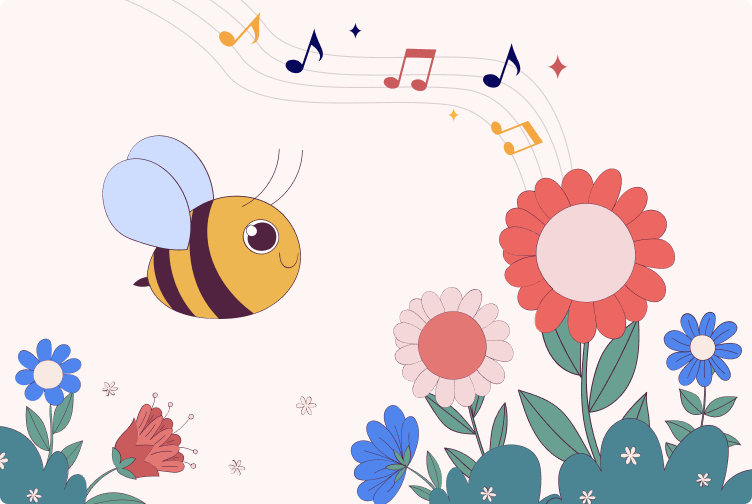
This is an extract from the OPIP book. Previously, B(obby) tried to convince A(lice) of the subjective nature of reality. Alice wasn’t convinced, so Bobby is providing yet another example…
B: To illustrate our subjective perception of the world a bit more, let me tell you the story of the flower and the bee.
A: I know it already.
B: I mean the animalistic version.
A: I know that one too; I like it.
B: I mean the one with the insects.
A: Ah, okay. Go on.
B: Bees need to identify the flowers that have the best nectar and pollen. For that, they have developed a very good eyesight. In some respects, it’s even better than that of humans as they can see colors in the ultraviolet spectrum. Moreover, bees use scent, shape, and even the electric fields of flowers[1] to make decisions. Every clue nature gives to distinguish lucrative flowers from the rest has been incorporated into bees’ sensory systems. Evolutionarily, that makes a lot of sense.
A: Right.
B: Now, let’s assume there is a certain species of bee that, due to some evolutionary freak accident, cannot perceive any of those clues directly.
A: Is it ever direct?
B: You’re right; it never is. Our perceptions don’t show us the real world. That’s the whole point I’m trying to make. But I’d like to make it even clearer by making it even more indirect. Let’s say our imaginary bee can still receive light, but it cannot internally process it into the perception of vision. However, as compensation, it developed a good inner ear, so all the clues from the outside get turned into the perception of sound. For example, assuming the bee has good musical tastes, high-yielding flowers trigger a sound like a Schubert symphony, while low-yielding flowers are perceived more like a Schönberg sonata.
A: What’s your point?
B: Is the melody the bee hears real?
A: It depends on what you mean by “real.” It exists in the bee’s reality, so in that sense, it’s real. But it’s not objectively real. It reminds me of the often-posed question “If a tree falls in a forest, and nobody hears it, does it still make a sound?”
B: Yes, or the variation that’s less often posed, but still worthwhile to think about, “If a man speaks his mind in a forest, and no woman hears him, is he still wrong?”
A: He is.
B: Anyway, the tree doesn’t make a sound, at least if we understand sound as the perception. Similarly, the bee fabricated the melody; it’s not a distorted notion of the “real world” or something like that. It’s entirely made up.
A: Yes, but at least it got triggered by something from the outside.
B: In this example, yes. But the perception is 100% internal, all artificially created. The bee, however, doesn’t see it that way; it ascribes to this perception a reality in itself.
A: Probably, yes.
B: Now, next question: is the consciousness of the bee required to make up the “reality” of sound?
A: Yes, as it only exists in the bee’s consciousness. Let me jump ahead—you think we’re like those (imaginary) bees?
B: Yes. The whole “A measurement is what makes the wave function collapse” is weird only as long as you assign an objective reality to it. In the objective Weltanschauung (worldview), why should a measurement do anything fundamental to the world? It doesn’t make sense. However, when you assume that we make up the world and it’s our model that creates particles, it makes perfect sense.
A: I’m still not convinced we’re like the imaginary bees.
B: Let’s get back to the example of colors. Do you agree that the perception of distinctly different colors is entirely a creation of the mind?
A: Yes sure. It’s still based on some form of reality, like different wavelengths of light.
B: Yes, that’s our interpretation of what triggered it. But the perception of different colors is 100% made up. And therefore, without consciousness, no colors, right?
A: I guess so.
B: Imagine talking to people before this was known. They would have sworn to you that the grass is green and that it’s a characteristic of the grass itself. You could have talked for ages, but you would have never succeeded in convincing them that we create it in our minds.
A: Probably. That still doesn’t mean what you’re saying is right.
B: Allow me to make it clearer by using yet another example…
To read that example, get the OPIP book.
—
[1] Clarke, D. et al. (2013): “Detection and learning of floral electric fields by bumblebees” (Science).
